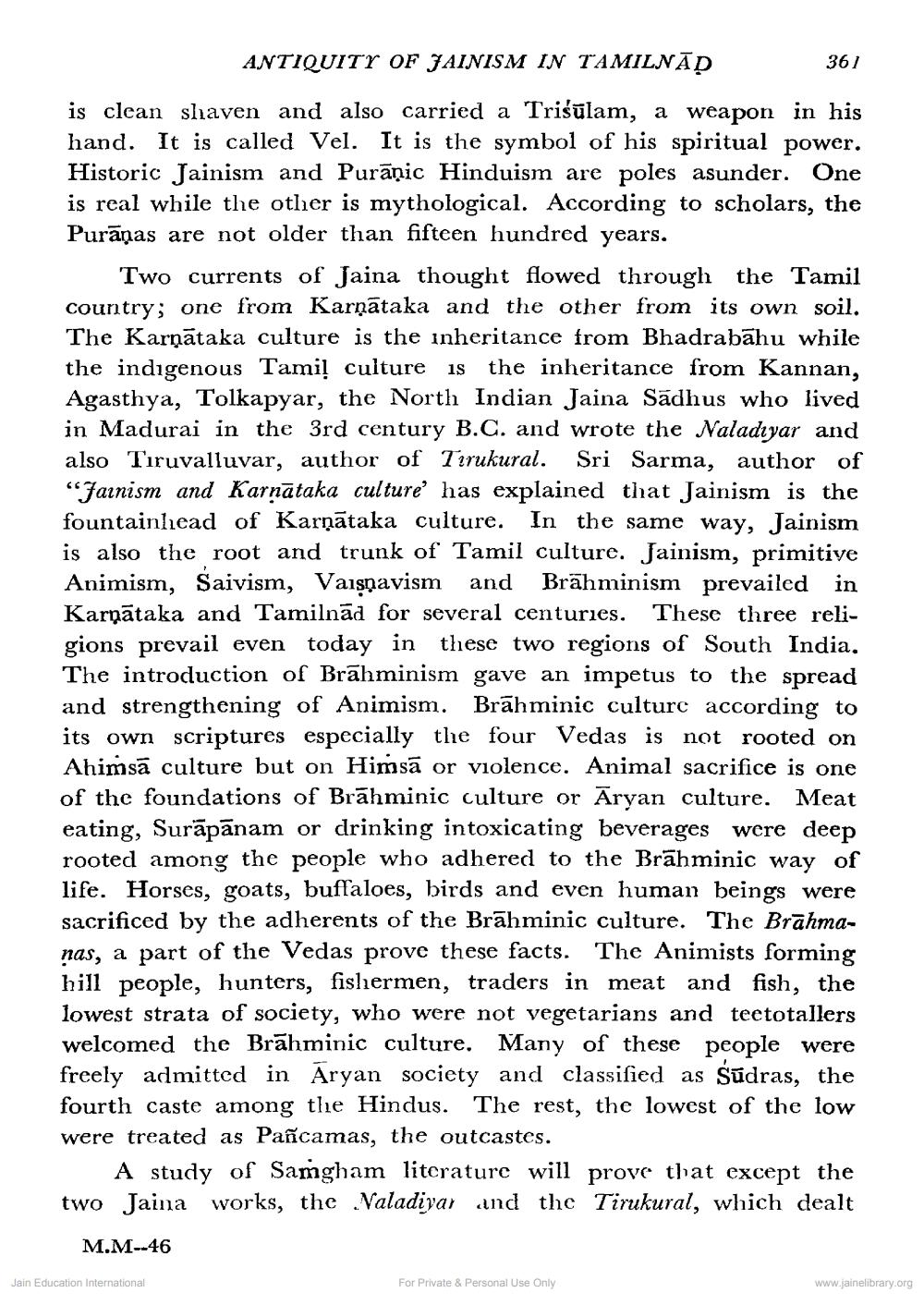________________
ANTIQUITY OF JAINISM IN TAMILNĀD
361
is clean slaven and also carried a Triśūlam, a weapon in his hand. It is called Vel. It is the symbol of his spiritual power. Historic Jainism and Purāņic Hinduism are poles asunder. One is real while the other is mythological. According to scholars, the Purāņas are not older than fifteen hundred years.
Two currents of Jaina thought flowed through the Tamil country; one from Karnātaka and the other from its own soil. The Karşātaka culture is the inheritance from Bhadrabāhu while the indigenous Tamil culture is the inheritance from Kannan, Agasthya, Tolkapyar, the North Indian Jaina Sadhus who lived in Madurai in the 3rd century B.C. and wrote the Naladıyar and also Tiruvalluvar, author of Tirukural. Sri Sarma, author of “Jainism and Karnātaka culture has explained that Jainism is the fountainhead of Karņātaka culture. In the same way, Jainism is also the root and trunk of Tamil culture. Jainism, primitive Animism, Saivism, Vaisnavism and Brahminism prevailed in Karşātaka and Tamilnād for several centuries. These three religions prevail even today in these two regions of South India. The introduction of Brāhminism gave an impetus to the spread and strengthening of Animism. Brāhminic culture according to its own scriptures especially the four Vedas is not rooted on Ahimsā culture but on Himsā or violence. Animal sacrifice is one of the foundations of Brāhminic culture or Aryan culture. Meat eating, Surāpānam or drinking intoxicating beverages were deep rooted among the people who adhered to the Brāhminic way of life. Horses, goats, buffaloes, birds and even human beings were sacrificed by the adherents of the Brāhminic culture. The Brahmanas, a part of the Vedas prove these facts. The Animists forming hill people, hunters, fishermen, traders in meat and fish, the lowest strata of society, who were not vegetarians and teetotallers welcomed the Brāhminic culture. Many of these people were freely admitted in Aryan society and classified as Sūdras, the fourth caste among the Hindus. The rest, the lowest of the low were treated as Pañcamas, the outcastes.
A study of Samgham literature will prove that except the two Jaina works, the Valadiyar and the Tirukural, which dealt
M.M--46
Jain Education International
For Private & Personal Use Only
www.jainelibrary.org




